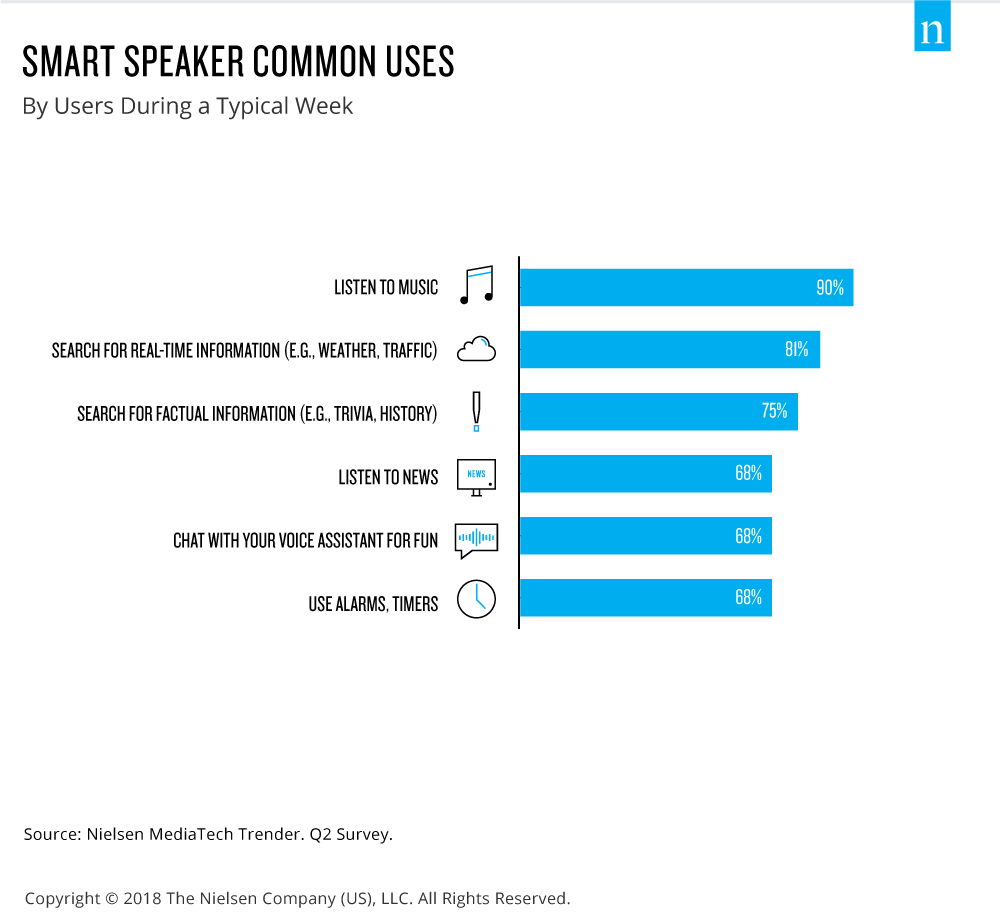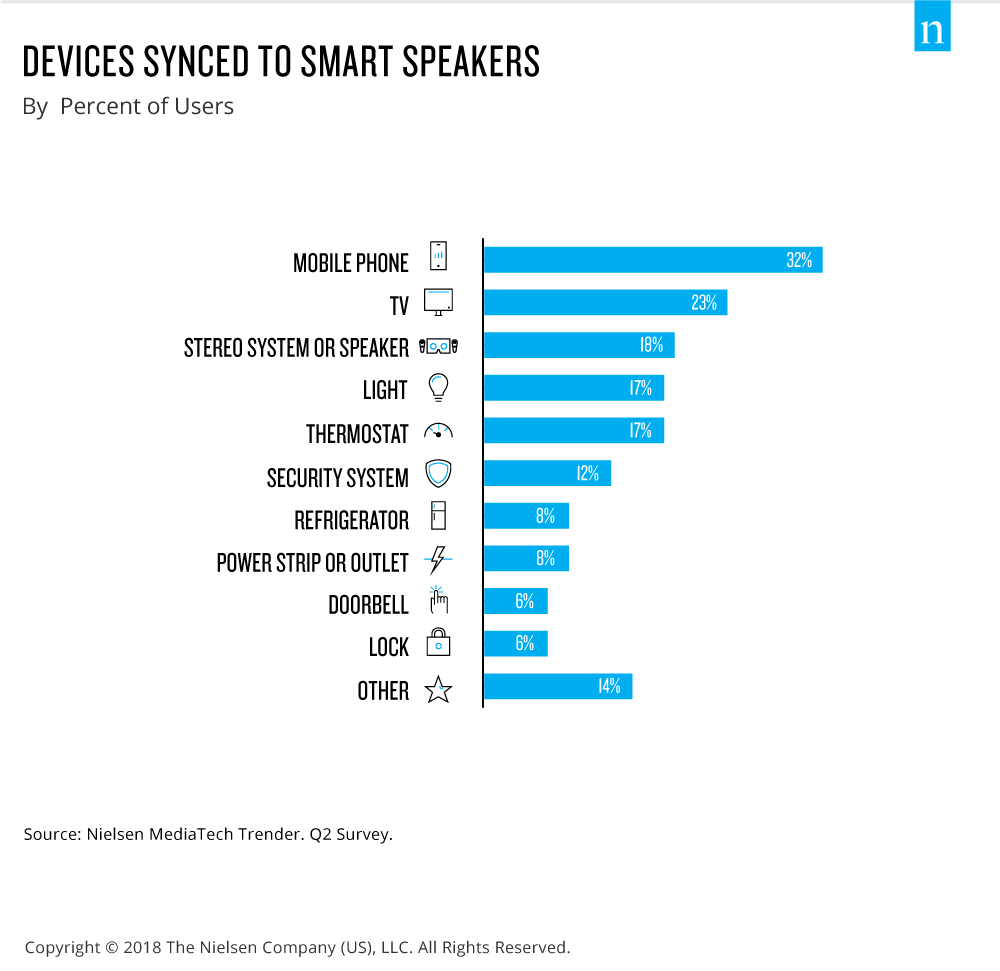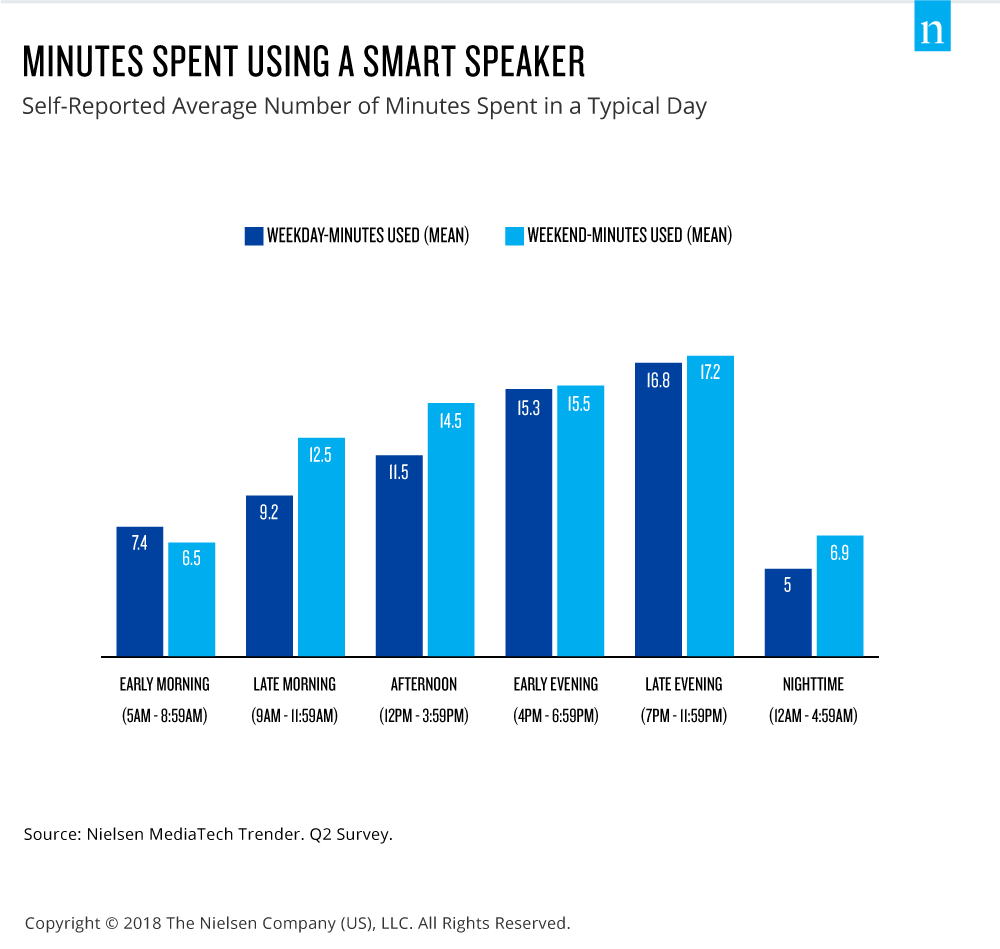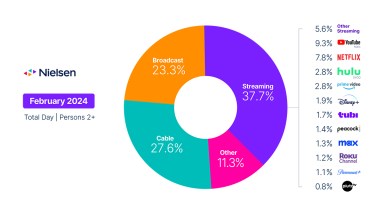Over the last couple of decades, technology has not only evolved at a rapid pace, but has been adopted by swaths of consumers across the U.S. This boon of innovation hasn’t just opened multiple avenues for consumers to engage with content and develop new, unique media habits—it’s also given marketers and brands another tool in their toolkit to reach these consumers. But while these emerging devices introduce new capabilities that bring visions of a future society, most consumers are demonstrating through their behavior that the tried and true is still fundamental to the experience. In the case of smart speaker users, simply finding the time to hear more audio (whether music, news or information) tops the list of weekly habits.
According to findings from Nielsen’s MediaTech Trender Survey, a quarterly consumer tracking survey that focuses on perceptions of emerging devices and services that are shaping media use today, smart speakers (e.g., Amazon Echo or Google Home) are a burgeoning interactive technology that offer consumers useful, cutting-edge capabilities. Of the U.S. homes that have a smart speaker, four out of 10 have more than one device in the household. Furthermore, 62% of smart speaker owners first started using the device within the last six months, with 45% planning to purchase more devices for their home.
Of the U.S. homes that have a smart speaker, four out of 10 have more than one device in the household
But even with futuristic, innovative services available at their fingertips, smart speaker users are still overwhelmingly using their devices to listen to audio; nearly all (90%) say they listen to music on the speaker in a typical week, while 68% listen to news.

Despite that users predominantly use their speakers for audio, they’re not neglecting the innovative technology on such devices. Voice commands, a key component and marquee capability of smart speakers, are highly utilized. About 81% of users report using voice-command searches for real-time information, such as weather and traffic conditions, during a typical week. When looking for factual information, such as answers to trivia or historical facts, 75% of users report turning to their smart speaker in a typical week. Users also enjoy smart speakers for their quirkier, yet cutting-edge features: 68% of them use the device to chat with the voice assistant for fun.
Though listening to music on a smart speaker may seem like a simple behavior, the second-quarter study reveals that the manner in which users access music can be quite complex. A smart speakers’ ability to sync with various devices, as well as utilize a wide-range of apps, give users the power of choice in their media habits.

When looking at devices that users typically sync to their smart speakers, mobile phones are used the most, with over a third of users linking the two devices. Smart phones have reached the point of ubiquity, with 90% of TV households having access to a smartphone according to the Q1 Nielsen Total Audience Report. Their propensity to be synced with smart speakers should come as no surprise, as many phones are now used for a seemingly infinite amount of ways—including playing music. Mobile phones, however, aren’t the only way users might be playing their favorite songs via smart speaker: audio streaming apps were the most likely application to be synced to the device (53% of users). At 52% of users, shopping apps were a close second.

Overall, the growing adoption of smart speakers is a trend to keep tabs on. In second-quarter 2018, 24% of homes owned a smart speaker device, according to the MediaTech Trender (up from 22% in Q1 2018). When breaking down usage during a typical day, people spend more time using their smart speakers on the weekend (average 72 total minutes) than the weekday (average 65 total minutes). Usage also increases throughout the day regardless of whether it’s a weekend or weekday, with peak use into the late evening.



